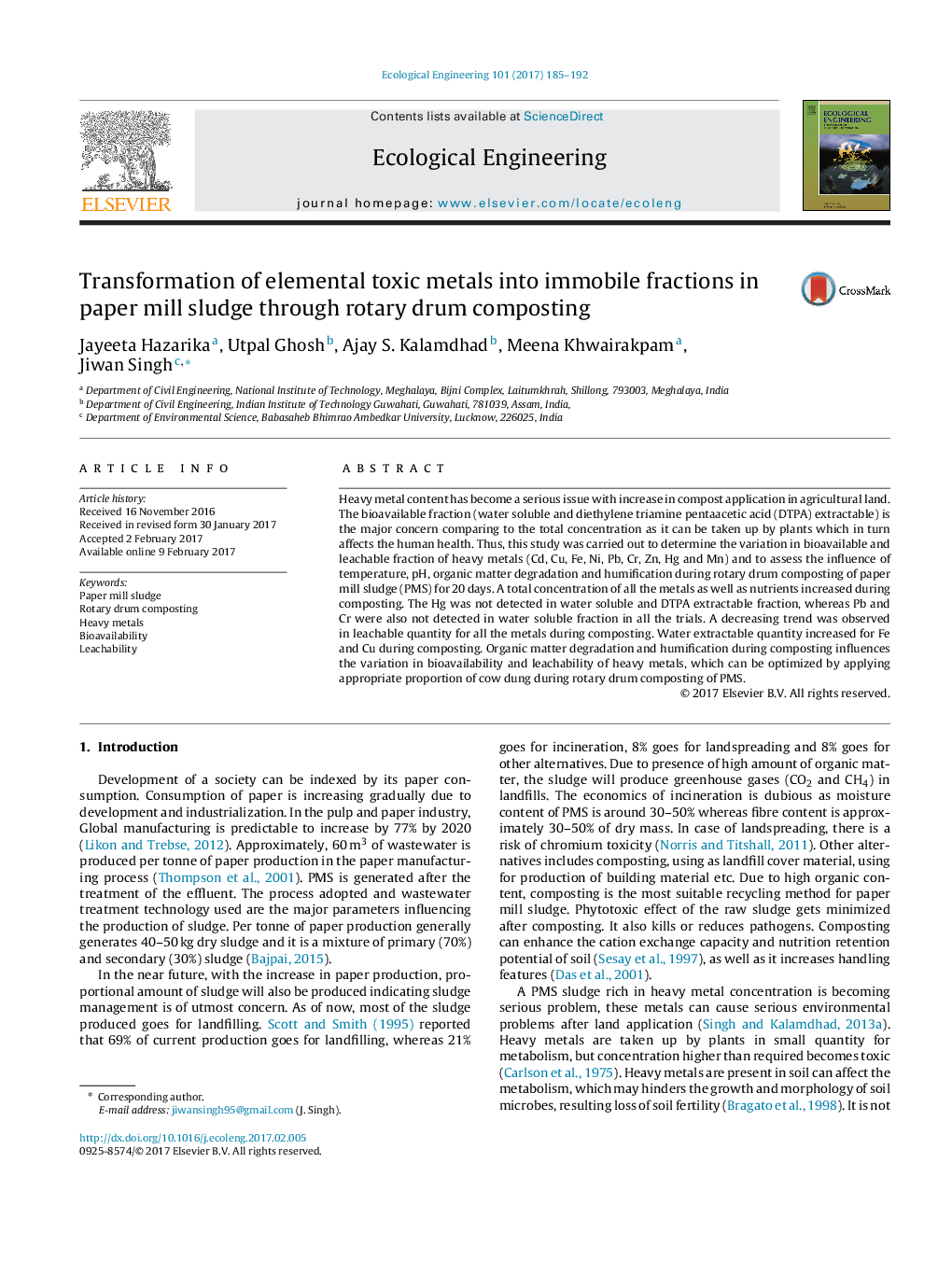| Article ID | Journal | Published Year | Pages | File Type |
|---|---|---|---|---|
| 5743928 | Ecological Engineering | 2017 | 8 Pages |
â¢The rotary drum reactor shows high potential for composting of paper mill sludge.â¢Paper mill sludge composting with addition of cattle manure was highly effective.â¢Bioavailability and leachability of toxic metals was reduced in the final compost.â¢A final compost can be utilized as soil amendment.
Heavy metal content has become a serious issue with increase in compost application in agricultural land. The bioavailable fraction (water soluble and diethylene triamine pentaacetic acid (DTPA) extractable) is the major concern comparing to the total concentration as it can be taken up by plants which in turn affects the human health. Thus, this study was carried out to determine the variation in bioavailable and leachable fraction of heavy metals (Cd, Cu, Fe, Ni, Pb, Cr, Zn, Hg and Mn) and to assess the influence of temperature, pH, organic matter degradation and humification during rotary drum composting of paper mill sludge (PMS) for 20Â days. A total concentration of all the metals as well as nutrients increased during composting. The Hg was not detected in water soluble and DTPA extractable fraction, whereas Pb and Cr were also not detected in water soluble fraction in all the trials. A decreasing trend was observed in leachable quantity for all the metals during composting. Water extractable quantity increased for Fe and Cu during composting. Organic matter degradation and humification during composting influences the variation in bioavailability and leachability of heavy metals, which can be optimized by applying appropriate proportion of cow dung during rotary drum composting of PMS.
